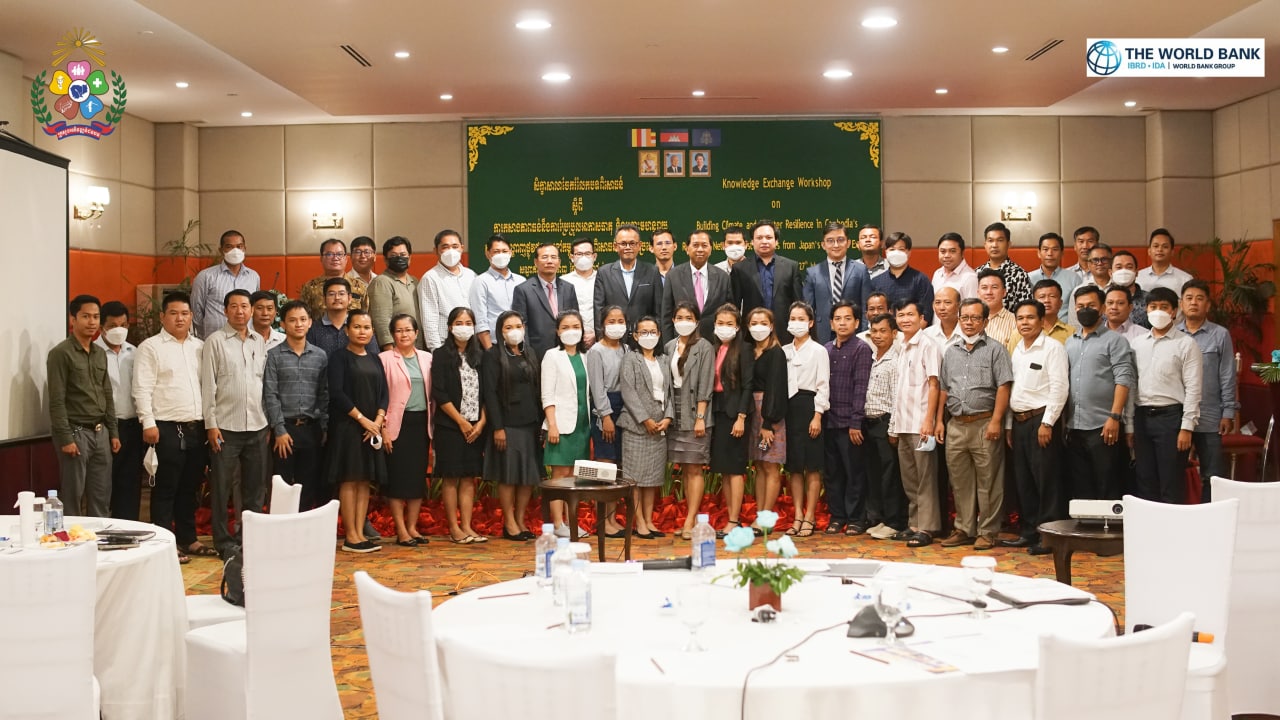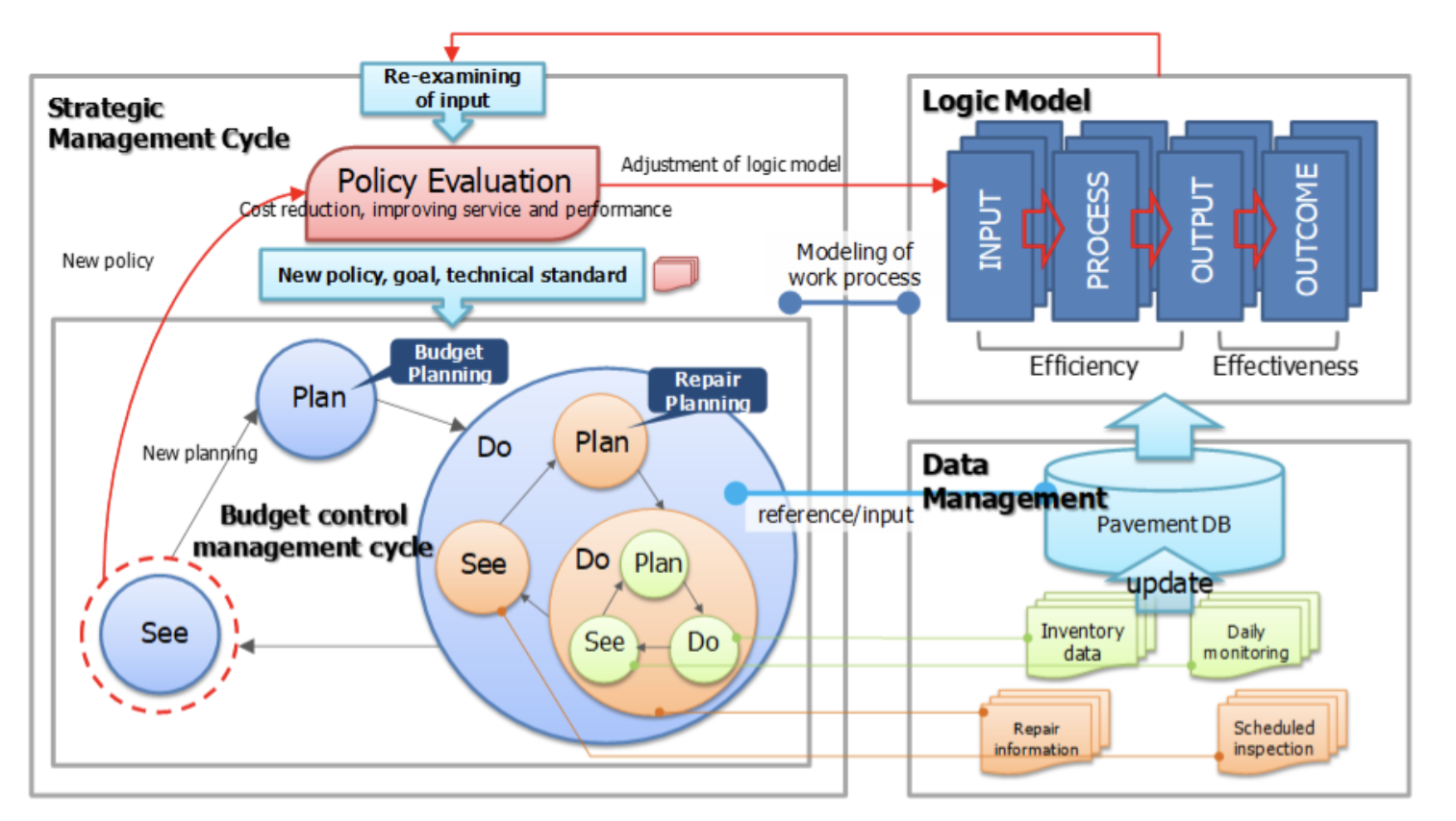
Cambodia’s Ministry of Rural Development (MRD) officials participating in a workshop to increase resilience of road systems. Credit: MRD
Cambodia is highly vulnerable to increasing natural hazards due to a changing climate. Around 85 percent of the country territory is within the Mekong River and Tonle Sap basins, making it especially vulnerable to river floods, storms, and droughts. With a total length of more than 47,000 km, rural roads account for about 75 percent of Cambodia’s road network and about 43,000km are unpaved roads. Flooded rural roads significantly jeopardize critical access for rural communities to reach key services and opportunities and the transportation of essential economic goods such as agriculture products.
The World Bank has been a strong partner to the Royal Government of Cambodia in building resilience to climate and natural hazards in the road and infrastructure sectors. With grant support from the Japan-World Bank Program for Mainstreaming Disaster Risk Management for Developing Countries managed by the Global Facility for Disaster Reduction and Response (GFDRR), the World Bank is executing a technical assistance grant to improving rural accessibility and road resilience to climate risks as part of the on-going Cambodia Road Connectivity Improvement Project.
As part of the technical assistance, a workshop for the Ministry of Rural Development (MRD) was held in in Phnom Penh on July 26-27, 2022, to introduce Japan’s leading knowledge and expertise in the area of disaster risk management (DRM) and rural road resilience. The workshop introduced key measures that help address the vulnerability of rural roads using a lifecycle approach – including disaster risk-informed road network planning, resilient engineering design for rural roads, proactive rural road asset monitoring and maintenance, and contingency programming for disaster readiness. About 60 officials from MRD’s central units joined in person and 104 provincial officials participated online.
Over the course of two days, six leading Japanese experts explained some of the most critical aspects of addressing climate and disaster vulnerability of roads, based on Japan’s experience.
-
Smart phones and iPads have transformed the monitoring of road asset conditions from a costly and manually intensive process into a highly automated and frequent undertaking to produce accurate data. In addition, using geographic information system (GIS) tools allow road asset managers to integrate population distribution data at the present and in the future, helping them to prioritize asset maintenance for locations that matter most. These data are critical for being able to plan for effective road maintenance proactively and efficiently (University of Tokyo: Professor Tomonori Nagayama and Associate Professor Kohei Nagai).
-
The Kyoto Model for asset management has proven to be instrumental for reducing the pavement costs for the lifecycle of roads in Japan and in Vietnam. The Model shows how robust asset condition data could be translated into deterioration forecasting to enable asset managers to come up with a fit-for-purpose budgeting for repair planning. This strategic management cycle helps to maximize the improvement of road performance and resilience with the fiscal resources available (Kyoto University’s Professor Kiyoshi Kobayashi).

The Kyoto Model. Source: Professor Kiyoshi Kobayashi, Kyoto University
- High-resolution radar rainfall observation data, together with probability analysis and hydrological simulation of watersheds, are being used to determine the extreme flooding risks for road networks. The interactive WebGIS tool, in particular, attracted strong interest from the workshop participants as a powerful tool to estimate flood extent, inundation depth, and potential damage to roads (Japan’s National Research Institute for Earth Science and Disaster Resilience).
-
A promising business model was presented from a small local company with eight employees in a Japanese tourist town that manages a 10 km paved toll road located in a national park. With revenues from the toll fare, the private company deploys a suite of tools and methods to improve and maintain road, such as conducting regular road performance evaluation and daily checks to detect any holes early on. The firm is also applying innovative multifunctional drainage pavement to maximize resilience to water, and installing weather meter to analyze climate conditions. This example inspired MRD officials, as many rural roads in Cambodia lead to world famous tourist destinations and hence may potentially be suitable for similar business models for private company participation.
These were among many experiences shared during the workshop, as MRD considers various options in establishing its first rural road asset management system. With MRD’s H.E. Secretary of State Dr. Chan Darong giving opening remarks and MRD’s Permanent Secretary of State Dr. Suos Kong closing the workshop, this is yet another example where GFDRR is funding opportunities for high-level dialogues to influence risk-informed national policy decisions. The World Bank, together with GFDRR, will continue to partner with Cambodia to build safer and more resilient rural roads so that development gains will not be eroded from the impacts of climate change and natural hazards.
by Bowen Wang, Transport Specialist, East Asia and Pacific Region and Masakazu Miyagi, Infrastructure Specialist, GFDRR
